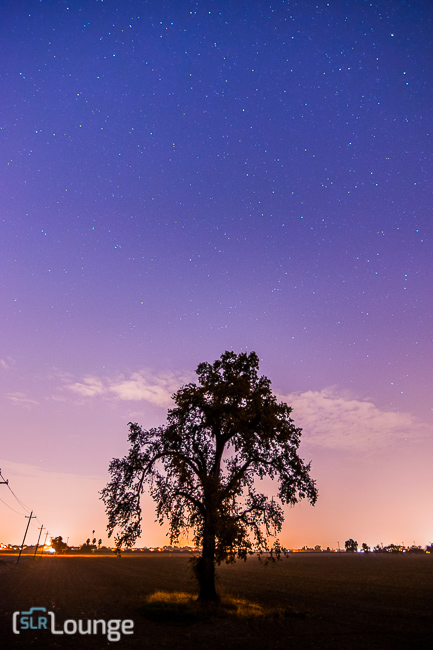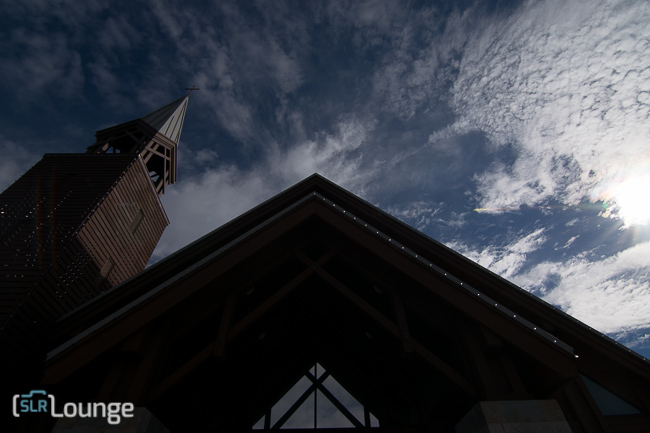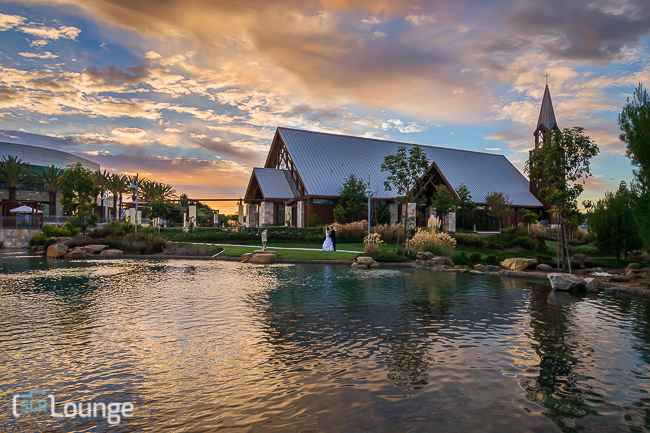
When Nikon announced that they would be taking the AA filter out of the advanced beginner DSLR series and giving us their already stunning 24 megapixel sensor in the “overclocked” form of the Nikon D5300, I was excited. Another lightweight, affordable camera for adventure photography! I had already tested the Nikon D5200 and was quite impressed, so the D5300 with its built in GPS and wifi could possibly be the camera that wins me back from full-frame to crop-sensors. (At least for general shooting and lightweight hiking trips, that is. I’ll always use full-frame bodies for certain things!)
The proof is, of course, in the images. So I got my hands on a production D5300 and took it out for a spin!
 Nikon D5300, Nikon 50mm f/1.8 G, FotoPro C5C Tripod
Nikon D5300, Nikon 50mm f/1.8 G, FotoPro C5C Tripod
30 sec. @ f/2.5 & ISO 100

 Nikon D5300, Tamron 90mm f/2.5 Macro
Nikon D5300, Tamron 90mm f/2.5 Macro
Initial Report
I’m not done testing the D5300 just yet, and I’m excited to see if this camera can really shine during my trip around the American Southwest in the next few weeks.
It’s tiny, super light, and offers incredible resolution that probably rivals that of the full-frame Nikon D610. Despite the D5300’s lack of weather sealing and pro AF, I think I’ll really enjoy it for general travel photography.
However I try not to jump to conclusions; I always wait a few weeks for “the rest of the internet” to get its hands on a camera just in case there are any weird bugs or issues with it, such as oily sensors or faulty shutters. (Or both!?)
If I had to publish a complete review of the Nikon D5300 right now though, based on a few days’ testing and sample images, this would be the verdict so far:
For most photographers the D5300 is actually going to be a marginal, borderline unnecessary upgrade from the D5200. If you already own a D5200, you probably don’t need to upgrade right away. If you’re considering Nikon and are starting from scratch, a D5200 makes a lot more sense right now but the D5300 doesn’t cost too much more so it’s kind of a toss-up for me.
In fact I’ll be honest, when I began comparing the D5200 and the D5300, (expecting to see a clear improvement in both detail and high ISO) …at first I was tempted to return the D5300 and just invest in another lens or something. The two cameras were almost the same.
HOWEVER, the D5300 has since been able to prove its worth for my very specialized intended use. I’m sure there are a few others out there like me, though, who are looking for something small but capable of delivering “the goods”. So off the top of my head, here are the most significant items that set it apart from the D5200. Or any other camera near its price range, for that matter!
- The GPS (And Wifi)
As an adventure photographer, I’m really excited for the very first built-in GPS DSLR for Nikon. This will be neat to use on adventures to remote locations. I tried the built-in Wifi and found it easy to set up and intuitive, however I’m just not as ecstatic about it as I am about GPS. I’m sure that plenty of people will feel exactly the opposite, though. - Less / zero banding in deep, deep shadow.
This was definitely a problem with the D5200. Admittedly only at extreme processing levels, but hey if I can save myself from bracketing an HDR during a portrait session at sunset, awesome! - True 60 FPS Video at 1080p
I suppose this will be useful here and there, but certainly isn’t a deal-breaker by itself… - RAW bit depth options
Some might think it’s a travesty for a serious photographer to shoot in anything less than 14-bit un-compressed RAW, however I have found that for timelapse creation it is really awesome to have the 12-bit option! 400 RAW frame timelapse sequences can really add up on a week-long adventure! - Both “Bulb” and “Timer” shutter modes!
Although it is probably the most obscure feature that 99% of non-landscape photographers will never even know their camera has, personally I feel like I’ve saved the best new feature for last! I’ll explain it further in another article, but simply put this new shutter mode allows you to take extended exposures (longer than 30 sec.) without needing any accessories. Many kudos to Nikon for finally changing this long-standing functionality!
Sample Images
Of course all those new features won’t mean anything if the sensor can’t deliver the goods. So let’s cut to the chase. 1.) Can I notice an improvement in high ISO image quality, since DXOMark states that the D5300’s sensor is indeed slightly superior? Not in the real world. The images all look the same to me. 2.) Can I notice an improvement in overall sharpness or detail, with the loss of the AA filter? Not very much, in the real world. Essentially, I simply find myself sharpening images less. Same as the D800 / D800E. 3.) Is the lack of an AA filter causing any terrible moire? Not very much, again. Every time I was able to get the D5300 to present moire, it was also present in images made with the D5200 as well. More importantly, it was easily removed by Lightroom 4/5’s Moire brush.
Enough talk, let’s see the images!
For ISO samples, I always try to create images with both a well-exposed bright area and a deep, near-black shadow so that you can see the difference between overall performance. From what I can tell with the D5300, image quality and detail is fantastic up until ISO 1600, very usable at 3200, and probably only of use in the well-exposed areas (such as for astro photography) by ISO 6400. Still, using ISO 6400 on a crop sensor is pretty awesome!









 Nikon D5300, Tokina 11-16mm f/2.8, FotoPro C5C Tripod
Nikon D5300, Tokina 11-16mm f/2.8, FotoPro C5C Tripod
 Andromeda Galaxy, slight crop
Andromeda Galaxy, slight crop
Nikon D5300, Nikon 50mm f/1.8 G, FotoPro C5C Tripod


 Dynamic Range – Even with a “maximum push” to shadows, no significant color shifts or banding appear!
Dynamic Range – Even with a “maximum push” to shadows, no significant color shifts or banding appear!

 The last image above is an HDR of 2-EV bracketed images, to demonstrate the difference from the previous one-shot HDR. In other words, at a certain point doing one-shot HDRs is still not desirable, but it is usable in a pinch.
The last image above is an HDR of 2-EV bracketed images, to demonstrate the difference from the previous one-shot HDR. In other words, at a certain point doing one-shot HDRs is still not desirable, but it is usable in a pinch.

 Detail is ever-so-slightly more fine-grained than with the D5200. Is it on par with the D7100? We’ll have to perform more testing…
Detail is ever-so-slightly more fine-grained than with the D5200. Is it on par with the D7100? We’ll have to perform more testing…
Moire on the D5300 VS D5200

 The above two images were captured at f/5.6 and both have had a very high-intensity, fine-radius sharpening applied in Lightroom 5, so the difference in sharpness is almost non-existent. Actually, even if I use zero sharpening whatsoever, in most images the difference is almost non-existent too.
The above two images were captured at f/5.6 and both have had a very high-intensity, fine-radius sharpening applied in Lightroom 5, so the difference in sharpness is almost non-existent. Actually, even if I use zero sharpening whatsoever, in most images the difference is almost non-existent too.
Moire that appears in both images almost equally, although I have yet to find one of those really starchy shirts that can make the camera go truly bonkers. Either way, so far so good!
Diffraction on the D5300
The last thing that I look for in testing sensors without an AA filter is how they handle diffraction. In my experience with the Nikon D7100 for example, it seemed as if I could easily push to f/16 without losing too much detail. It was noticeable, but not necessarily a show-stopper.
The D5300’s amazingly fine detail definitely gets obliterated by f/16. I’ll have to perform more tests to see if this is the same exact level of detail loss as with other cameras, and I’ll definitely include a comparison to the D610 / D600 in our full review as well. For now suffice it to say that the D5300’s lack of an AA filter does make it slightly more detailed at f/8 and f/11 than the D5200. Yay!

 Since they cram 24 megapixels into a 1.5x crop factor, both sensors are going to see slight diffraction at f/8, but certainly not bad and the D5300 seems to have marginally more “bite”…
Since they cram 24 megapixels into a 1.5x crop factor, both sensors are going to see slight diffraction at f/8, but certainly not bad and the D5300 seems to have marginally more “bite”…

 At f/11 diffraction is definitely coming into play, and starting to blur any differences between the two sensors.
At f/11 diffraction is definitely coming into play, and starting to blur any differences between the two sensors.

 By f/16 both sensors are getting quite soft, yet the D5300’s lead is still there. Barely.
By f/16 both sensors are getting quite soft, yet the D5300’s lead is still there. Barely.
Full D5300 Review Coming Soon
We’ll have a more complete review of the Nikon D5300 coming in December, complete with a more extensive comparison between all of Nikon’s current crop-sensor DSLR bodies. We’ll break down which camera is the right choice for which type of photographer, and what your upgrade options are depending on which camera you might currently own.
If you have any specific questions about any of the current lineup of crop-sensor Nikon DSLR’s, please feel free to leave a comment below!
Take care,
=Matt=
Matthew Saville
Follow his wilderness nightscape adventures on Instagram: instagram.com/astrolandscapes




Get Connected!